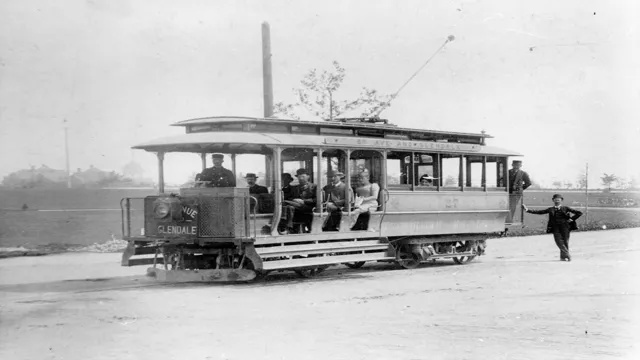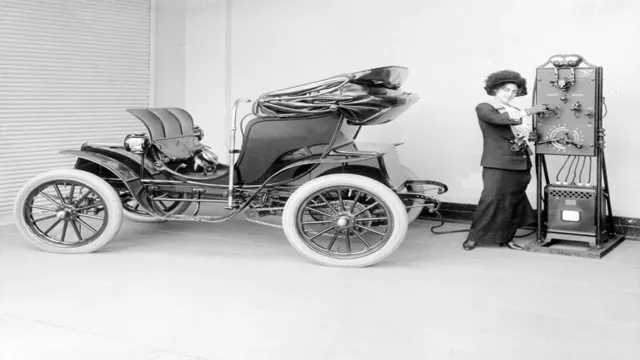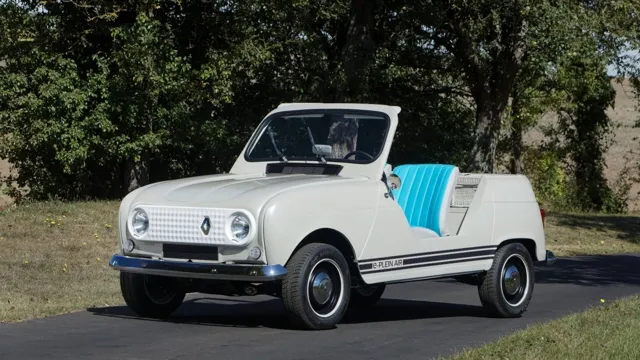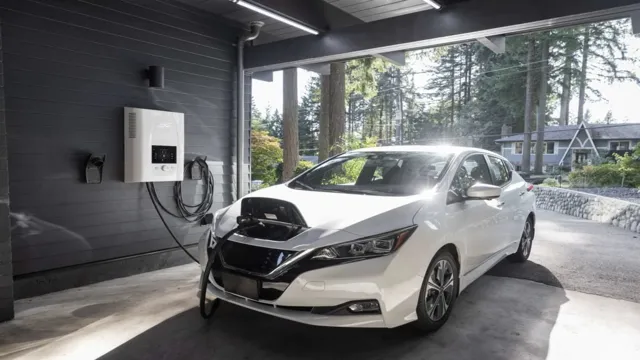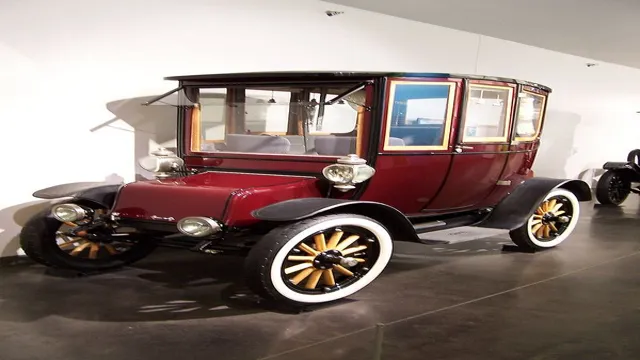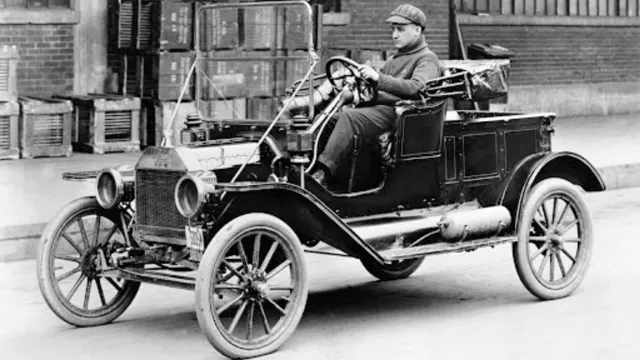Exploring the Fascinating History of Electric Trolley Cars: From the Early Days to Modern Times
Have you ever wondered how people got around cities before the proliferation of cars and buses? While horse-drawn carriages were certainly an option, electric trolley cars proved to be a game-changer in urban transport history. These innovative vehicles ran on tracks and were powered by electricity, revolutionizing the way people commuted and traveled. The history of electric trolley cars dates back to the late 1800s when cities began to grow and congestion became a major issue.
The first electric trolley car was introduced in Richmond, Virginia in 1888 by a man named Frank Sprague. From there, the concept spread rapidly across North America, with major cities like New York, Chicago, and Boston quickly adopting the technology. Despite their success, electric trolley cars eventually fell out of favor in the mid-20th century with the rise of buses and automobiles.
However, they remain an important part of our transportation heritage and have even seen a resurgence in popularity in recent years as cities look for sustainable transit options. From their humble beginnings to their modern-day usage, electric trolley cars have played a crucial role in the history of urban transport. So next time you step onto a bus or hail an Uber, take a moment to appreciate the technological advancements that brought us to where we are today.
Introduction
Electric trolley cars were once a popular mode of transportation in many cities around the world. In the late 1800s and early 1900s, these electric-powered vehicles filled the streets with their unmistakable hum. They were cheaper to operate than steam-powered trains and more reliable than horse-drawn carriages.
Electric trolley cars were also considered an environmentally friendly option, as they did not emit harmful pollutants like their predecessors. The history of electric trolley cars is fascinating, and it’s amazing to think that these vehicles were the backbone of transportation in many cities for decades. Although their popularity waned over time, there has been a renewed interest in electric trolleys in recent years as people look for sustainable transportation options.
What is an Electric Trolley Car?
An electric trolley car, also known as a streetcar or tram, is a type of public transportation that runs on rails and is powered by electricity. It was first introduced in the late 19th century as an alternative to horse-drawn carriages and steam-powered trains. The electric trolley car revolutionized urban transportation by providing a fast, efficient, and eco-friendly mode of travel.
The cars were initially powered by overhead wires, but advances in technology have made it possible to power them through batteries or underground cables. Today, electric trolley cars are still in use in select cities around the world, providing reliable and sustainable transportation to millions of people every day.
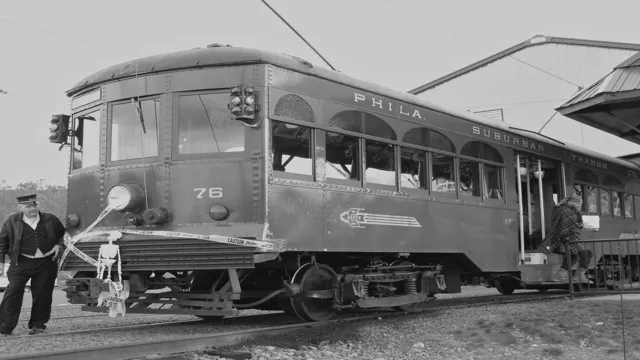
The Birth of Electric Trolley Cars
Electric trolley cars revolutionized transportation in the late 19th century, bringing a new level of convenience to urban commuters. The first electric trolley cars were developed in the 1880s, replacing horse-drawn streetcars that were expensive, slow, and unreliable. The electric trolley cars were powered by electricity transmitted through overhead wires, instead of by horsepower.
This allowed them to move faster, carry more passengers, and travel longer distances. They also generated less noise and pollution, making them more environmentally friendly than their predecessors. The new technology caught on quickly, spreading from the U.
S. to other parts of the world. By the turn of the century, electric trolley cars had become a common sight in almost every major city.
They remained a popular mode of transportation until the mid-20th century, when cars and buses began to dominate urban transportation. Nonetheless, the electric trolley car history and legacy remain important as it paved the way for the development of modern public transportation.
Invention of the First Electric Trolley Car
The birth of the electric trolley car is a fascinating story of human innovation and ingenuity. It all started in the late 19th century when cities were growing fast, and transportation was becoming a significant challenge. Horses and cars were no longer enough to carry the increasing masses of people around town.
That’s when the idea of an electric trolley car emerged. The first electric trolley car was invented in Germany in 1881, by Werner von Siemens. This new invention revolutionized the way people travel.
The electric trolley car quickly spread across the world, reaching the United States in the early 1890s. With its smooth, quiet electric motors and ease of use, the electric trolley quickly became the preferred mode of transport for millions of people worldwide. Today, we may take electric trolley cars for granted, but the truth is that they represent one of the most significant technological innovations in modern transportation.
First Electric Trolley Car on Track
The birth of electric trolley cars revolutionized public transportation in the late 19th century. The first electric trolley car was introduced in 1888, in Richmond, Virginia. This marked the beginning of an era where efficient and fast public transportation became a reality.
The electric trolley cars were an improvement on the horse-drawn carriages that were previously used, as they could carry more people and travel faster. They also proved to be more economical and eco-friendly, as they didn’t require animal feed or produce horse manure. The concept of electric trolley cars quickly spread across the United States, providing urban areas with a reliable mode of transportation.
Today, the legacy of the electric trolley car can still be felt, as cities strive to offer cleaner and greener transportation options for their citizens.
Growth of Electric Trolley Cars
Electric trolley car history is a fascinating topic that has a lot to offer. Since the mid-1800s, people have been looking for ways to make transportation more efficient and less pollutant, and the electric trolley car was one of the first solutions. These early versions ran on a single track, and their power came from overhead wires that were attached to a moving arm.
They quickly became popular in major cities across the US and Europe, as they were faster, quieter, and more comfortable than their horse-drawn predecessors. The growth of electric trolley cars was also supported by the advances in electrical engineering and the development of specialized companies that produced electric motors and other necessary equipment. By the turn of the 20th century, electric trolley cars were a common sight in most urban areas.
However, their popularity declined with the advent of the automobile, as people began to demand more flexibility and independence. Today, electric trolley cars are still in use in some places, mainly in tourist areas or as part of an overall mass transit system. Overall, the history of the electric trolley car is proof of how innovation can transform the way we live and move.
Spread of Electric Trolleys in United States
The growth of electric trolley cars in the United States was a significant turning point for public transportation. In the late 1800s, cities were expanding rapidly, and horse-drawn carriages and steam-powered streetcars were the primary forms of transportation. However, these modes of transportation were expensive and inefficient.
The introduction of electric trolley cars changed the game, providing people with an efficient and affordable way to move around the city. By the early 1900s, electric trolley cars were spread across many US cities, such as New York, Boston, and Chicago, and were welcomed by commuters who quickly realized the benefits of this new technology. The electric trolley cars were comfortable, fast, and reliable, and they could move more people at a time than horse-drawn carriages or steam-powered streetcars.
The expansion of electric trolley cars revolutionized the way people moved around the city and was a crucial factor in the development of urban spaces.
Electric Trolleys in Europe and Asia
Electric Trolley Cars
Electric trolley cars are enjoying a surge in popularity in Europe and Asia. These eco-friendly alternatives to gas-guzzling vehicles have become the preferred choice of commuters in many cities. The trolley cars run on rails and are powered by electricity from overhead wires.They are highly efficient and produce zero emissions, making them a cleaner and more sustainable form of transport. The growth of electric trolley cars can be attributed to their many benefits, which include affordability, efficiency, reliability, and environmental sustainability. Unlike other modes of transport, electric trolley cars are not subject to traffic congestion, making them a reliable and fast way to get around in crowded cities.
Their affordability also makes them an attractive option for low-income individuals who cannot afford private cars or other expensive modes of transport. Moreover, electric trolley cars offer an enjoyable way to see the city, with panoramic views of the surrounding landscape. As more and more people become aware of the benefits of electric trolley cars, we can expect to see them become a common sight in cities around the world.
The Decline of the Electric Trolley Car
Electric trolley cars, a popular mode of transportation in many cities during the 20th century, have experienced a decline in recent decades. Once the go-to option for commuters, these vehicles have been replaced by cars, buses, and trains. The reasons for this shift are manifold.
Firstly, the rise of the automobile industry in the mid-20th century made private cars a more attractive option for many people. Secondly, competition from other public transit options, like buses and trains, sapped the popularity of electric trolley cars. Additionally, maintenance costs for electric trolley cars proved to be high, leading many cities to phase them out.
Finally, the decline of the electric trolley car was hastened by the proliferation of suburbs, where cars reign supreme. Despite all these factors, there is still a fondness for electric trolley cars among certain populations, and some cities are attempting to revive this mode of transportation for the 21st century.
Introduction of the Automobile
The introduction of the automobile had a profound impact on transportation in the early 20th century. With the advent of the automobile, the popularity of electric trolley cars began to decline rapidly. The trolley car had been the primary mode of public transportation in many cities, but it was slow and could only travel on fixed tracks.
The automobile, on the other hand, was faster and more flexible, able to travel on any road or street. Many people switched to using automobiles instead of trolley cars because of these benefits. The decline of the electric trolley car was also driven by changes in public policy, with many cities investing more in highways and roads than in public transportation.
Despite the decline of the trolley car, its legacy lives on in the many modern light rail systems that use electric power to provide clean and efficient transportation for millions of people.
Competition from Buses and Subways
Competition from Buses and Subways The electric trolley car was once the primary mode of transportation in many American cities in the late 1800s and early 1900s. However, the rise of buses and subways caused the decline of the electric trolley car. Buses were cheaper to produce and operate, while subways offered faster and more reliable transportation options.
Additionally, the automobile industry played a role in the decline of trolley cars as more individuals purchased cars for personal transportation. This shift in transportation caused many cities to abandon their trolley car systems in favor of buses and subways. However, in recent years, there has been a growing interest in bringing back trolley cars as a sustainable transportation option.
Many cities have recognized the environmental benefits of electric trolley cars and are now investing in their revival. Despite the competition from buses and subways, the future of the electric trolley car looks bright as more cities aim to reduce their carbon footprints.
Revival of the Electric Trolley Car
Electric trolley cars have a long and fascinating history that dates back to the late 19th century. These vehicles were a staple of public transportation in many cities until the mid-20th century, when the rise of automobiles and buses led to their decline. However, in recent years there has been a renewed interest in the electric trolley car, as cities look for ways to reduce carbon emissions and create more sustainable transportation systems.
Many cities across the United States are exploring the possibility of bringing back electric trolley cars, either by restoring old systems or building entirely new ones. These vehicles are not only environmentally friendly, but also offer a unique and charming way to travel through city streets. As we look to the future of transportation, it will be interesting to see how electric trolley cars continue to evolve and shape our cities.
Modernization and Technological Advances
The revival of electric trolley cars is taking hold as a modernization and technological advance, bringing forth a fresh perspective on sustainable transportation. Innovative changes have adapted electric trolley cars for the 21st century in order to meet the demands of smart cities, providing efficient and environmentally friendly modes of transportation. In cities such as San Francisco, they’ve not only brought a nostalgic feel to the community, but electric trolley cars have reduced the carbon footprint and stretched the capacity to move more people with less space.
The locomotive’s energy comes from overhead wires, reducing noise and pollution thus creating a superior user experience. The electric trolley car’s modern-day sophistication, improved technologies and eco-friendly perks make it a standout option in the evolution of public transport.
Benefits of Electric Trolley Cars Today
The revival of electric trolley cars has numerous benefits that make them a great transportation option today. One of the biggest advantages is their environmental friendliness as they don’t run on fossil fuels, reducing carbon emissions and air pollution. Electric trolleys also offer a smooth and comfortable ride and are often powered by renewable energy sources like solar or wind.
Additionally, they are cost-effective to operate and maintain, making them an efficient public transportation option. Electric trolleys are also very quiet, which makes for an enjoyable and peaceful ride. With increasing concerns about the environment and the future of transportation, it’s no wonder that electric trolleys are gaining popularity today.
They provide a sustainable and practical means of transportation that can benefit both urban and suburban areas. So if you’re looking for an eco-friendly, efficient, and comfortable way to travel, an electric trolley might just be the perfect choice for you!
Conclusion
In conclusion, the electric trolley car has an electrifying history that has powered transportation and urban development for over a century. From the horse-drawn streetcars of old to the sleek and efficient light-rail systems of today, trolley cars have shaped the way we move and connect with our communities. As long as there are commuters and city dwellers looking for a convenient and sustainable way to get around, the trolley car will continue to be a shining example of innovation and progress.
So, next time you hop on board, remember that you’re not just taking a ride – you’re joining an electric legacy that has been charged up and rolling forward for generations!”
FAQs
When was the first electric trolley car invented?
The first electric trolley car was invented in 1888.
Who invented the electric trolley car?
The electric trolley car was invented by Frank J. Sprague.
Where was the first electric trolley car line established?
The first electric trolley car line was established in Richmond, Virginia.
When did the use of electric trolley cars decline?
The use of electric trolley cars declined in the mid-20th century, with the rise of automobiles and buses.
